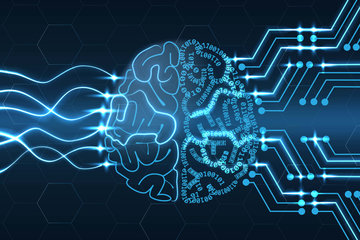“The most important discovery in recent decades”
Interview with Sandra Kortner of the Max Planck Institute for Physics in Munich, who heads a Minerva junior research group at the ATLAS experiment of the LHC and also coordinates an international group of researchers who are using ATLAS to look for the Higgs particle.

You have just heard the two talks on the latest results. What is your reaction?
Kortner: I am very excited and enthusiastic. The results of the two detectors are so close to each other. This is really phenomenal. It is the most important discovery in particle physics in recent decades. This is a dream come true for me.
Would you say that the long-sought Higgs particle has been found?
Kortner: We have definitely discovered a new particle. At the moment, the data also support it being the Higgs particle as predicted by the standard model. But we need to measure the properties of this particle more precisely to clarify its identity.
Why are there still doubts about the identity of the particle?
Kortner: We are not able to directly detect the Higgs particle. It is created in a proton collision and decays in fractions of a second into different components. Theory predicts that a Higgs particle can decay in several different ways, the decay rates depending on the mass of the Higgs particle. The mass is not unequivocally predicted by theory. We now have an approximate measured value of 125 GeV to 126 GeV, which will become more precise with more data. In ATLAS, we have so far only investigated two of all possible decay channels with sufficient statistical significance. These results do indeed support this being a Higgs particle, but we will need to investigate the other decay possibilities and rates in order to determine the properties more precisely.
Which other particles are also possible?
Kortner: There could be further particles that are kind of messengers of a new physics beyond the standard model. These include the particles of so-called super-symmetry theory, for example. And it could also be a super-symmetric Higgs boson. However, with the data obtained so far, it’s not yet possible to say.
Which properties of the particle will be measured in the future?
Kortner: In addition to the mass, we want to measure the spin, for example. In greatly simplified terms, this can be imagined to be the particle’s rotation. The standard model predicts a value of zero for the spin. These and other parameters are important because they enter into the standard model. Their measurement is going to take years.
Physicists today know a whole series of elementary particles. What is so special about the Higgs particle?
Kortner: The standard model has two types of particles: one type forms the building blocks of matter; the other mediates the forces between them. These particles have very different masses. There are even massless particles, such as the photon. The Higgs mechanism, which also predicts the existence of the Higgs particles, explains how the particles are given their mass. In this respect, it is something special. It’s the key particle for the understanding of matter. However, the Higgs particle does not explain the magnitude of the mass of the particular particles. It doesn’t even predict the mass of the Higgs particle itself.
Assuming the identity of the particle is confirmed as Higgs. What is the next step?
Kortner: We are all convinced that above a certain energy there must be a new physics beyond the standard model. The theory of super-symmetry is such an extension. It would explain why there are two different types of particle, namely the fermions with half-integral spin and the bosons with integral spin. Super-symmetry predicts the existence of a large number of as yet undiscovered particles. The LHC is ideal for finding them. In addition, the lightest super-symmetry particle predicted is a prime candidate for the mysterious dark matter. This search will take us years.
If this discovery is the Higgs particle, will it be honoured with the Nobel Prize in physics?
Kortner: I think so. I do not believe though that it will be awarded to CERN or the collaborations of experiments, but to the scientists who proposed the Higgs mechanism. This could be somewhat more difficult, as several people have made an important contribution: in addition to Peter Higgs from the University of Edinburgh, Robert Brout and François Englert in Brussels, and Carl Hagen, Gerald Guralnik, and Thomas Walther Kibble at Imperial College in London also developed the theory at almost the same time. Brout died recently, so that only five physicists would need to be honoured. However, the Statutes of the Nobel Committee do not allow this.
Could at least a few of the experimental physicists at the LHC or the detectors hope for a Nobel Prize?
Kortner: No, it is not possible to single out three persons who have played an outstanding role. This discovery is the achievement of an international collaboration in which absolutely everyone has contributed to the success. This is why none of us has hopes of being awarded the Prize. Nevertheless, we are all very proud and overjoyed at this moment – today alone is already a prize for us.
Interview by Thomas Bührke












